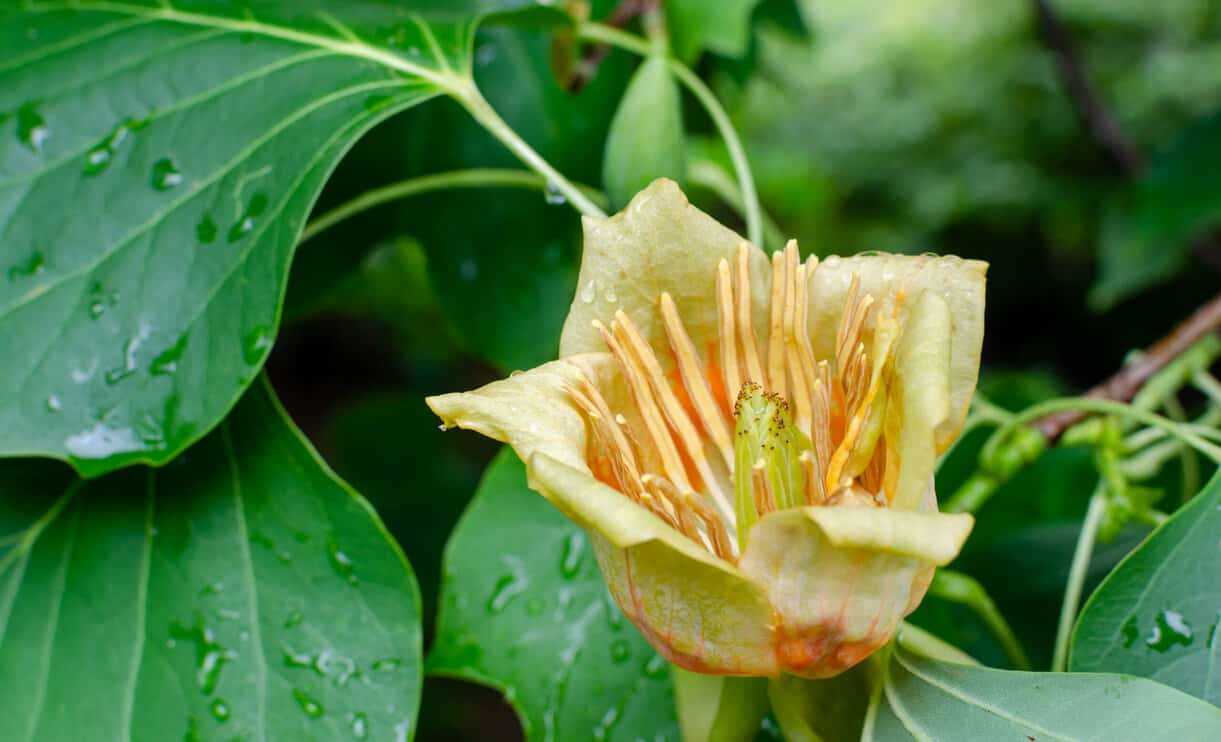- Tips for Growing a Tulip Tree: Insights from a Seasoned Gardener
- 1. Choose the Right Location
- 2. Prepare the Soil
- 3. Planting the Tree
- 4. Watering and Mulching
- 5. Pruning
- 6. Fertilizing
- 7. Pest and Disease Control
- 8. Winter Protection
- 9. Patience and Enjoyment
- Choosing the Right Location
- Sunlight
- Soil
- Space
- Climate
- Protection
- Neighbors
- Preparing the Soil
- 1. Test the soil
- 2. Clear the area
- 3. Dig the hole
- 4. Improve drainage
- 5. Amend the soil
- 6. Backfill the hole
- 7. Mulch the area
- 8. Water thoroughly
- Planting the Tulip Tree
- Choosing the Right Location
- Preparing the Soil
- Planting the Tree
- Caring for the Tree
- Watering and Fertilizing
- Watering
- Fertilizing
- Pruning and Shaping
- Protecting from Pests and Diseases
- Harvesting and Storing Seeds
- When to Harvest
- How to Harvest
- Preparing the Seeds
- Storing the Seeds
- Long-Term Storage
- Conclusion
- Troubleshooting Common Problems
- Poor Growth or Wilting Leaves
- Poor Flowering
- Insect Infestations
- Leaf Spot and Fungal Diseases
- Winter Damage
- FAQ:
- How do I start growing a tulip tree from seeds?
- What is the best time of year to plant a tulip tree?
- How tall can a tulip tree grow?
- What are the soil requirements for growing a tulip tree?
- Are tulip trees prone to any diseases or pests?
- Video: How to Make Tulips Come Back & Repeat Flower
Tulip trees, scientifically known as Liriodendron tulipifera, are stunning ornamental trees that are known for their beautiful flowers and distinctive leaf shape. These trees are native to the eastern parts of North America and are highly popular among gardeners due to their fast growth rate and low maintenance requirements. If you are planning to add a touch of elegance and beauty to your garden, growing a tulip tree may be the perfect choice.
Before you start planting a tulip tree, it’s important to choose an appropriate location in your garden. These trees prefer full sun or partial shade and require well-draining soil. Make sure to select a spot that is not close to any buildings or other trees, as tulip trees have a wide spreading root system. Additionally, consider the mature size of the tree, as they can reach heights of up to 70 feet.
Once you have chosen the right location, it’s time to prepare the soil. Tulip trees prefer neutral to slightly acidic soil, so it’s essential to test and amend the soil accordingly. Before planting, loosen the soil and mix in organic matter such as compost or well-rotted manure to improve its fertility. This will provide your tulip tree with the necessary nutrients for healthy growth.
When planting a tulip tree, dig a hole that is twice as wide and just as deep as the root ball. Gently remove the tree from its container and place it in the hole, making sure that the top of the root ball is level with the soil surface. Backfill the hole with soil, firmly press it down, and water thoroughly. Mulch around the base of the tree to help conserve moisture and suppress weed growth.
Once your tulip tree is planted, it’s important to provide it with regular care and maintenance. Water the tree deeply once a week, especially during dry periods, and adjust the watering schedule according to weather conditions. Fertilize the tree in early spring with a balanced slow-release fertilizer to promote healthy growth. Prune any damaged or crossing branches to maintain a strong structure.
In conclusion, growing a tulip tree can be a rewarding experience for any gardener. By following these real-life tips from an experienced gardener, you can ensure that your tulip tree thrives and becomes a stunning centerpiece in your garden.
Tips for Growing a Tulip Tree: Insights from a Seasoned Gardener
Are you interested in growing a beautiful tulip tree in your garden? Look no further! In this article, we will provide you with essential tips and insights from a seasoned gardener to help you successfully grow a tulip tree.
1. Choose the Right Location
When selecting a spot for your tulip tree, make sure to choose an area that receives full sun exposure. Tulip trees thrive in direct sunlight and require at least six hours of it each day. Additionally, ensure that the soil is well-draining to prevent water buildup.
2. Prepare the Soil
Before planting your tulip tree, it’s crucial to prepare the soil properly. The ideal soil for tulip trees is loamy, well-draining, and rich in organic matter. Consider adding compost or aged manure to improve the soil’s fertility and structure.
3. Planting the Tree
When planting your tulip tree, dig a hole that is twice as wide and deep as the tree’s root ball. Gently place the tree into the hole, making sure that it is planted at the same depth as it was in the nursery container. Fill the hole with soil, firmly press it down, and water the tree thoroughly.
4. Watering and Mulching
Proper watering is crucial for the health of your tulip tree. After planting, water the tree deeply, saturating the root area. During dry periods, provide regular watering to keep the soil consistently moist but not waterlogged. Applying mulch around the base of the tree will help retain soil moisture and prevent weed growth.
5. Pruning
Tulip trees generally require minimal pruning. However, you can trim any dead, damaged, or diseased branches as needed. Prune in late winter or early spring when the tree is dormant to avoid excessive sap loss.
6. Fertilizing
Fertilizing your tulip tree can enhance its growth and overall health. Apply a slow-release balanced fertilizer in early spring, following the package instructions for the correct dosage. Avoid over-fertilizing, as it can lead to excessive foliage growth and weaker branches.
7. Pest and Disease Control
Tulip trees are generally resistant to pests and diseases. However, they can sometimes be susceptible to aphid infestations or leaf spot diseases. Monitor your tree regularly and take appropriate action if you notice any signs of pest or disease damage, such as distorted leaves or discoloration.
8. Winter Protection
In colder climates, protect your tulip tree during the winter months. Apply a layer of mulch around the base of the tree to insulate the roots and prevent frost damage. Wrapping the tree trunk with burlap can also protect it from harsh winter winds.
9. Patience and Enjoyment
Lastly, remember that growing a tulip tree is a long-term commitment. It may take several years for the tree to reach its mature height and produce its iconic tulip-like flowers. Be patient and enjoy the gradual growth and beauty of your tulip tree as it becomes a centerpiece in your garden.
By following these tips from a seasoned gardener, you can successfully grow a stunning tulip tree in your garden. Happy gardening!
Choosing the Right Location
When it comes to growing a tulip tree, choosing the right location is crucial for its long-term health and growth. Here are some factors to consider:
Sunlight
Tulip trees thrive in full sun, meaning they require at least 6 hours of direct sunlight each day. Look for a spot in your garden or yard that receives ample sunlight throughout the day.
Soil
The soil should be well-draining to prevent waterlogging, as tulip trees do not tolerate excessive moisture. The ideal soil pH for tulip trees is between 5.0 and 7.0, which is slightly acidic to neutral. Conduct a soil test to determine the pH of your soil and make necessary amendments if needed.
Space
Tulip trees are known for their large size, so it’s important to choose a location that provides enough space for the tree to grow without any obstructions. Consider the mature height and spread of the tulip tree and make sure it won’t interfere with overhead power lines, structures, or other plants.
Climate

Tulip trees are native to the eastern United States and thrive in USDA hardiness zones 4 to 9. Ensure that your location falls within this range to provide the tree with the right climate conditions for optimal growth.
Protection
While tulip trees are generally low-maintenance, they can be susceptible to strong winds and storms. Planting the tree near a windbreak, such as a building or a sturdy fence, can help protect it from winds.
Neighbors
Consider the proximity of other plants and trees to your tulip tree. Make sure they are compatible in terms of space requirements and water needs. For instance, avoid planting the tulip tree too close to other large trees that might compete for resources.
Preparing the Soil
Before planting a tulip tree, it is crucial to prepare the soil properly. Healthy soil creates a strong foundation for the tree to grow and thrive. Here are some steps to follow when preparing the soil:
1. Test the soil
Start by testing the soil pH level and nutrient content. Tulip trees prefer slightly acidic to neutral soil with a pH range of 6.0 to 7.5. Conduct a soil test to determine the pH level and make any necessary adjustments to achieve the ideal range.
2. Clear the area
Clear the planting area of any weeds, grass, or debris. This will ensure that the tulip tree receives all the available nutrients and minimizes competition for resources.
3. Dig the hole
Dig a hole that is wider and deeper than the tree’s root ball. The hole should be at least three times wider than the root ball to allow the roots to spread easily.
4. Improve drainage
Tulip trees prefer well-draining soil. If the soil in your area has poor drainage, consider incorporating organic matter such as compost or sand into the soil to improve its drainage capacity.
5. Amend the soil
If the soil lacks essential nutrients, amend it with organic matter or a balanced slow-release fertilizer. This will provide the necessary nutrients for the tulip tree to grow healthy and strong.
6. Backfill the hole
Place the tulip tree in the hole, ensuring that the root collar is level with or slightly above the soil surface. Gradually backfill the hole with the amended soil, firming it gently around the roots to eliminate air pockets.
7. Mulch the area
Apply a layer of organic mulch, such as wood chips or shredded bark, around the base of the tulip tree. This will help conserve moisture, suppress weed growth, and regulate soil temperature.
8. Water thoroughly
After planting, water the tulip tree thoroughly to settle the soil and provide moisture to the roots. Keep the tree well-watered during the first year, especially during dry periods.
By following these steps to prepare the soil properly, you will provide an optimal environment for your tulip tree to flourish and thrive for years to come.
Planting the Tulip Tree
When it comes to planting a tulip tree, there are a few key considerations to keep in mind. By following these steps, you can ensure that your tulip tree has the best chance of thriving in your garden.
Choosing the Right Location
It is important to choose the right location for your tulip tree. These trees thrive in full sun, so make sure to select a spot that receives at least 6 hours of direct sunlight each day. Additionally, the soil should be well-draining and fertile.
Preparing the Soil
Before planting your tulip tree, it is important to prepare the soil. Start by removing any weeds or grass from the area. Then, dig a hole that is two to three times wider than the root ball of the tree. The hole should be the same depth as the root ball.
Next, mix organic matter, such as compost or well-rotted manure, into the soil. This will help to improve drainage and provide nutrients for the tree.
Planting the Tree
When planting the tulip tree, gently remove it from its container or burlap wrap. Gently loosen the roots if they are tightly packed. Place the tree in the center of the hole, making sure that the top of the root ball is level with the surrounding soil.
Backfill the hole with soil, firming it gently around the roots. Water the tree thoroughly to settle the soil and eliminate any air pockets.
Caring for the Tree

After planting, it is important to care for your tulip tree to ensure its health and growth. Water the tree regularly, especially during dry periods, to keep the soil moist but not waterlogged.
Apply a layer of mulch around the base of the tree to help retain moisture and suppress weeds. Avoid piling mulch against the trunk, as this can create a breeding ground for pests and diseases.
Prune the tree in late winter or early spring to remove any dead or damaged branches. This will help to maintain the tree’s shape and overall health.
By following these steps for planting and caring for your tulip tree, you can enjoy the beauty of this magnificent tree in your own garden.
Watering and Fertilizing
Watering and fertilizing are important aspects of growing a healthy and vibrant tulip tree. Proper care in these areas will ensure the tree receives the necessary nutrients and moisture to thrive.
Watering
Tulip trees require regular watering, especially during the warmer months. The tree should be watered deeply, allowing the water to penetrate the soil and reach the roots.
- Watering should be done once or twice a week, depending on the weather and soil conditions. If the soil feels dry to the touch, it’s a sign that the tree needs water.
- It’s important to water the tree slowly and evenly, allowing the water to soak into the ground rather than running off the surface. This will help the roots absorb the water more effectively.
- Avoid overwatering, as this can lead to root rot and other diseases. Make sure the soil has good drainage to prevent water from pooling around the roots.
Fertilizing

Fertilizing tulip trees is essential for promoting healthy growth and foliage. The right balance of nutrients will help the tree produce strong branches and vibrant leaves.
- It’s recommended to fertilize the tree in early spring, just before new growth begins. Use a slow-release, balanced fertilizer to provide a steady supply of nutrients over time.
- Follow the instructions on the fertilizer packaging for the proper application rate. Typically, the fertilizer should be spread evenly around the base of the tree, avoiding direct contact with the trunk.
- During the first year of growth, it’s best to use a fertilizer with a higher nitrogen content to promote leaf development. In subsequent years, a balanced fertilizer with equal amounts of nitrogen, phosphorus, and potassium is recommended.
Regular watering and fertilizing will help your tulip tree grow strong and healthy. With proper care, you can enjoy the beauty and shade provided by this magnificent tree for years to come.
Pruning and Shaping

Pruning and shaping your tulip tree is an essential part of its care. Proper pruning not only helps maintain the tree’s health but also promotes its overall growth and appearance. Here are some tips to help you prune and shape your tulip tree effectively:
- Timing: Pruning is best done during the dormant season, typically in late winter or early spring before new growth begins. Avoid pruning during the summer as it may cause stress to the tree.
- Equipment: Use clean and sharp pruning tools to make clean cuts. This will minimize damage to the tree and help prevent the spread of diseases.
- Remove dead or damaged branches: Start by inspecting the tree for dead, diseased, or damaged branches. Use bypass pruners or loppers to carefully remove these branches near the base or at their point of origin.
- Thinning: Thinning involves removing selected branches to improve air circulation and reduce the risk of disease. It also helps to minimize the weight on the tree and prevent damage during strong winds. Aim to maintain an open and balanced canopy.
- Shaping: To shape your tulip tree, selectively prune branches to create a desired form or structure. Consider the tree’s natural growth habit and aim for a well-balanced shape. Avoid heavy pruning that may alter the tree’s natural form.
- Prune crossing or rubbing branches: Identify any branches that are crossing or rubbing against each other. These rubbing branches can create wounds and increase the risk of disease. Remove the less desirable branch to maintain a healthy and well-spaced canopy.
- Avoid excessive pruning: While pruning is necessary, avoid excessive removal of branches. Overpruning can stress the tree and reduce its ability to produce energy through photosynthesis.
Remember to always step back and assess the tree’s overall shape and appearance after each pruning cut. It’s important not to rush the process and to take your time to achieve the desired results. By following these pruning and shaping tips, you can help your tulip tree thrive and enhance the beauty of your garden.
Protecting from Pests and Diseases
Keeping your tulip tree free from pests and diseases is crucial to its overall health and longevity. Here are some tips to help you protect your tree:
- Regular Inspections: Conduct regular inspections of your tulip tree to check for any signs of pests or diseases. Look for unusual growth patterns, discoloration, or damage to the leaves and bark.
- Prune Properly: Pruning your tree can help improve its health and reduce the risk of certain diseases. Make sure to use clean, sharp tools and follow proper pruning techniques.
- Remove Diseased Parts: If you notice any diseased branches or leaves on your tulip tree, promptly remove them to prevent the spread of infection.
- Provide Adequate Water: Proper watering is essential for the health of your tree. Avoid overwatering, as it can lead to root rot and other diseases. Ensure that the soil is well-drained.
- Fertilize Appropriately: Use a balanced, slow-release fertilizer to provide necessary nutrients to your tulip tree. Follow the manufacturer’s instructions for application rates and timing.
- Mulch: Apply a layer of organic mulch around the base of your tree to help retain moisture, regulate soil temperature, and prevent weed growth. Be careful not to pile the mulch against the trunk, as it can lead to rot.
- Monitor for Pests: Keep a close eye out for common pests that can affect tulip trees, such as aphids, scale insects, or caterpillars. If you notice an infestation, consider using natural or organic pest control methods.
- Consult an Expert: If you’re unsure about how to deal with a particular pest or disease affecting your tulip tree, it’s a good idea to consult a professional arborist or horticulturist for guidance and advice.
By following these tips and observing your tulip tree closely, you can help prevent and manage pests and diseases effectively, allowing your tree to flourish for years to come.
Harvesting and Storing Seeds
Harvesting and storing seeds is an important step in growing a tulip tree. By properly collecting and storing the seeds, you can ensure a successful growing season for future trees.
When to Harvest
The timing of seed harvesting is crucial. Generally, tulip tree seeds are ready to be harvested in the late autumn or early winter when the seed pods have turned brown and are starting to split open. It is important to harvest the seeds before they fall naturally from the tree, as they may be eaten by birds or damaged by the elements.
How to Harvest
To harvest the tulip tree seeds, you will need a pair of pruners or secateurs. Gently cut the seed pods from the tree, making sure to avoid damaging the surrounding branches or bark. Place the seed pods in a clean bucket or bag to prevent them from scattering or getting lost.
Preparing the Seeds
Once you have harvested the seed pods, it is important to prepare the seeds for storage. Start by removing any excess debris or twigs from the seed pods. Then, take a clean cloth or paper towel and gently rub the pods to remove the thin papery wings that surround the seeds. This will help prevent mold or rot during storage.
Storing the Seeds
To store the tulip tree seeds, you will need a cool, dry location. It is best to store them in a paper bag or envelope, as this allows for some airflow while protecting the seeds. Avoid using plastic containers or bags, as they can trap moisture and cause the seeds to rot.
Label the bag or envelope with the date of harvest and the variety of tulip tree seeds. This will help you keep track of the age and type of seeds you have stored.
Long-Term Storage
If you plan to store the tulip tree seeds for an extended period of time, it is recommended to place them in an airtight container and store them in the refrigerator. This can help prolong the viability of the seeds and prevent them from drying out.
Remember to check on your stored seeds periodically to ensure they remain dry and undamaged. Discard any seeds that show signs of mold or rot.
Conclusion
By following these tips for harvesting and storing tulip tree seeds, you can increase your chances of successful germination and growth. Remember to select healthy seeds, store them properly, and label them for future reference. With a little care and attention, you can enjoy the beauty of tulip trees for many years to come.
Troubleshooting Common Problems
Poor Growth or Wilting Leaves

If your tulip tree is not growing well or the leaves are wilting, it could be due to several factors:
- Lack of water: Tulip trees need regular watering, especially during dry periods. Make sure the soil is moist, but not waterlogged.
- Root issues: Check for any signs of root rot or damage. Make sure the tree is planted in well-draining soil and the roots are not restricted.
- Nutrient deficiencies: Tulip trees require proper nutrition to grow well. Test the soil and consider providing additional fertilization if necessary.
- Pests or diseases: Inspect the tree for any signs of pests or diseases, such as aphids, scale insects, or fungal infections. Treat accordingly with organic pesticides or consult a professional.
Poor Flowering
If your tulip tree is not producing many flowers, there are a few potential reasons:
- Young tree: It may take a few years for a young tulip tree to mature enough to produce abundant flowers. Be patient and give it time.
- Insufficient sunlight: Tulip trees need full sun to thrive and flower. Ensure that the tree is placed in a location with plenty of direct sunlight.
- Poor pruning: Incorrect pruning can impact flowering. Avoid heavy pruning during the flowering season, as this may remove future flower buds.
Insect Infestations

Tulip trees can be susceptible to certain insect infestations:
- Aphids: These small pests suck sap from the leaves, causing them to curl and become distorted. Wash them off with a strong stream of water or use an organic insecticidal soap.
- Scale insects: Scale insects can attach themselves to the bark and leaves, feeding on plant fluids. Use horticultural oil or insecticidal soap to control them.
- Tulip tree scale: This specific scale insect species affects tulip trees. Consult with a professional arborist for the appropriate treatment.
Leaf Spot and Fungal Diseases
Leaf spot and fungal diseases can be problematic for tulip trees:
- Tar spot: This fungal disease causes black spots on the leaves. Rake up fallen leaves and dispose of them to prevent the spread of the disease.
- Leaf blight: Leaf blight can cause browning and necrosis of the leaves. Prune affected branches and dispose of them properly to prevent further infection.
- Verticillium wilt: This soil-borne fungus can cause wilting and yellowing of leaves. Infected trees may need to be removed to prevent the spread of the disease.
Winter Damage
Tulip trees are generally hardy, but they can suffer from winter damage in harsh climates:
- Cold winds: Protect your tree from cold winds by wrapping it in burlap or constructing a windbreak.
- Frost cracks: Extreme temperature fluctuations can cause the bark to split. Keep the base of the tree mulched to insulate the roots.
- Ice storms: Ice accumulation can weigh down branches and cause them to break. Remove ice as gently as possible to minimize damage.
By identifying and addressing these common problems, you can ensure that your tulip tree thrives and provides beauty to your garden for years to come.
FAQ:
How do I start growing a tulip tree from seeds?
To start growing a tulip tree from seeds, you first need to collect the seeds from a mature tree. Wait until the fall, when the tree drops its flowers and forms seed pods. Collect the pods from the ground, open them, and remove the seeds. Next, prepare a pot with well-draining soil and plant the seeds about an inch deep. Keep the pot in a warm and sunny location and water the soil regularly. The seeds should germinate within a few weeks.
What is the best time of year to plant a tulip tree?
The best time to plant a tulip tree is in the early spring or late fall. These trees prefer cool temperatures and moist soil, so planting during these seasons will help them establish strong roots before the heat of summer or the cold of winter. Make sure to choose a location that receives full sun for optimal growth.
How tall can a tulip tree grow?
Tulip trees, also known as Liriodendron tulipifera, are known for their impressive height. In ideal growing conditions, they can reach heights of 70 to 90 feet. These trees have a fast growth rate and often reach maturity in about 20 years. They can add a striking focal point to any landscape.
What are the soil requirements for growing a tulip tree?
Tulip trees thrive in well-draining soil that is rich in organic matter. They prefer a slightly acidic to neutral pH level. Before planting, it’s a good idea to amend the soil with compost or well-rotted manure to improve its fertility and drainage. Avoid planting the tree in areas with heavy clay soil, as this can lead to root rot. The soil should also be kept consistently moist, but not waterlogged.
Are tulip trees prone to any diseases or pests?
While tulip trees are generally healthy and resistant to many diseases, they can be susceptible to certain pests such as aphids, scale insects, and tulip tree leaf miners. Regularly inspect the tree for any signs of infestation, such as distorted leaves or sap-sucking insects. If pests are detected, you can use insecticidal soap or horticultural oil to treat the tree. Pruning and removing any affected branches can also help control the spread of pests and diseases.







